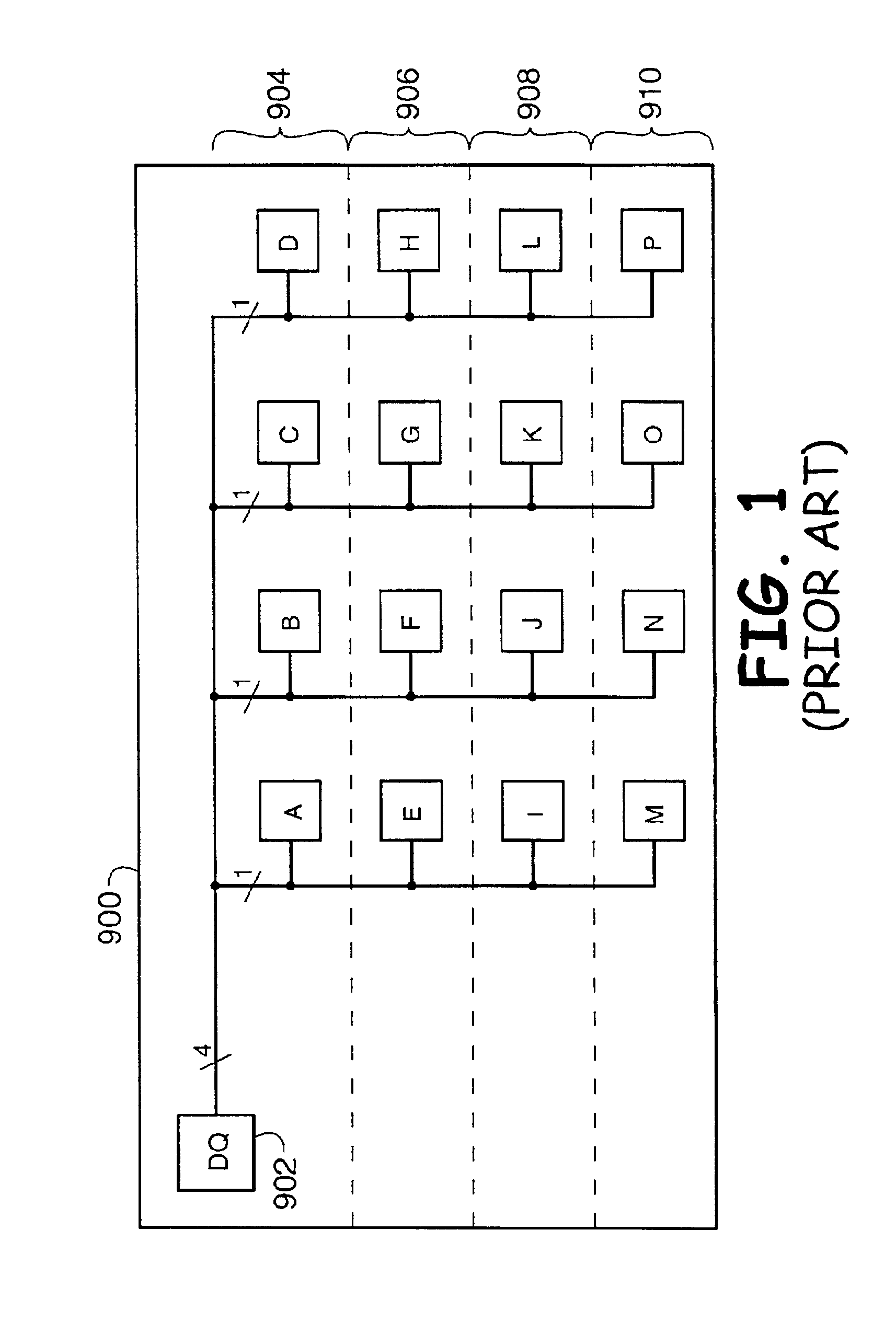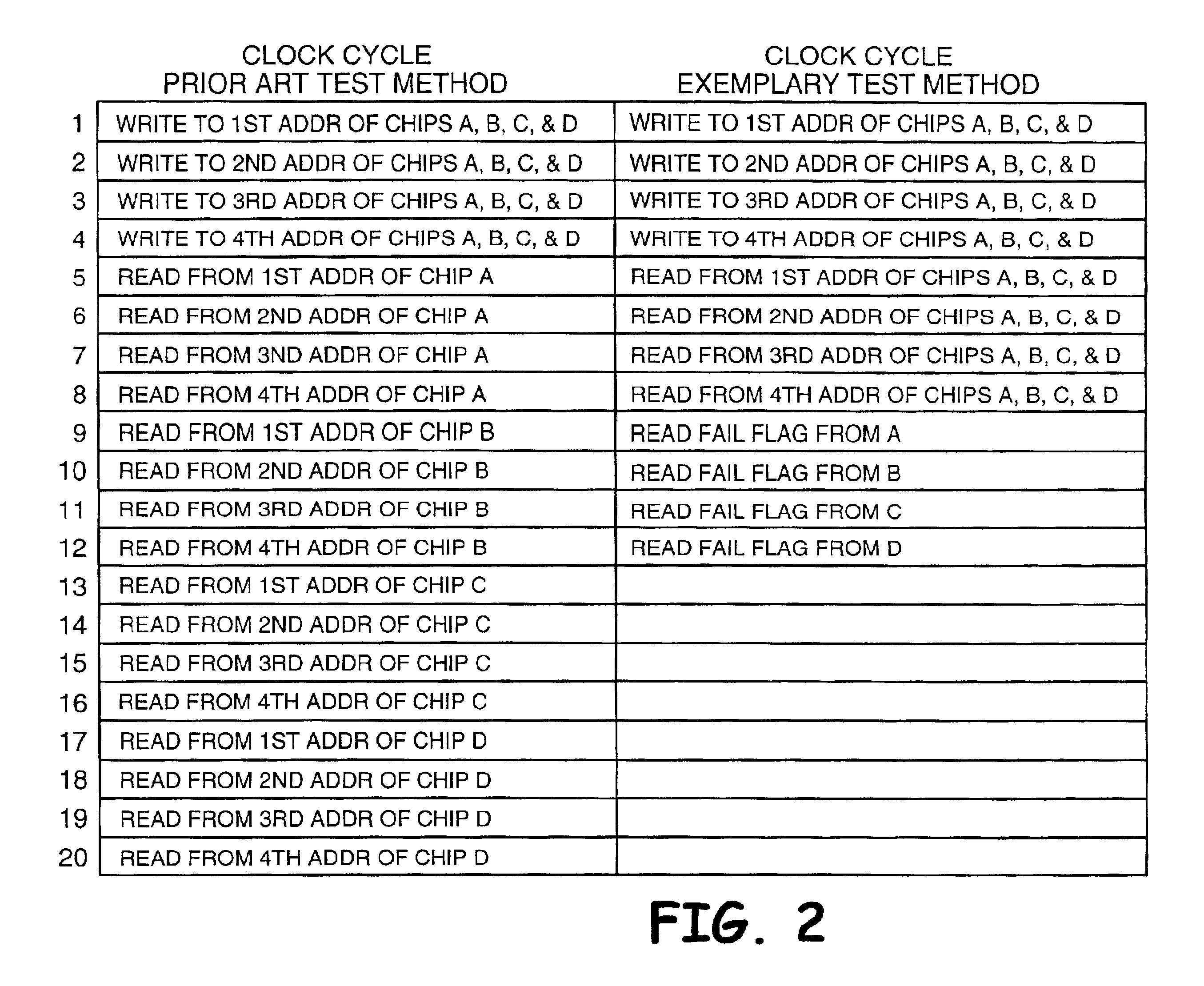Circuit and method for test and repair
a technology of circuits and circuits, applied in the field of test and repair of memory, can solve problems such as error detection and repair schemes, cell failure to properly store data, and raise problems
- Summary
- Abstract
- Description
- Claims
- Application Information
AI Technical Summary
Benefits of technology
Problems solved by technology
Method used
Image
Examples
Embodiment Construction
[0015]In terms of error detection, exemplary embodiments of the current invention shorten test time by presenting a testing scheme alternative to the one presented in the Background. To begin with, a simplified test method practiced in the prior art is presented. FIG. 1 presents a portion of a simplified tester 900 having only four DQ's 902. While the tester 900 may be able to physically hold 16 chips (A-P), its circuitry is designed to direct signals to and from at most four chips at one time. It is understood that the tester 900 also has conductive lines (not shown) that carry address and command information to the chips, and that these lines are also limited in number and so can direct signals to and from at most four chips at a time. The areas in which the tester may communicate in such a fashion are identified in this specification as “regions.” Tester 900 has four regions 904, 906, 908, and 910. Further, it is assumed for purposes of explanation that the parts A-P are “×1” par...
PUM
 Login to View More
Login to View More Abstract
Description
Claims
Application Information
 Login to View More
Login to View More - R&D
- Intellectual Property
- Life Sciences
- Materials
- Tech Scout
- Unparalleled Data Quality
- Higher Quality Content
- 60% Fewer Hallucinations
Browse by: Latest US Patents, China's latest patents, Technical Efficacy Thesaurus, Application Domain, Technology Topic, Popular Technical Reports.
© 2025 PatSnap. All rights reserved.Legal|Privacy policy|Modern Slavery Act Transparency Statement|Sitemap|About US| Contact US: help@patsnap.com



